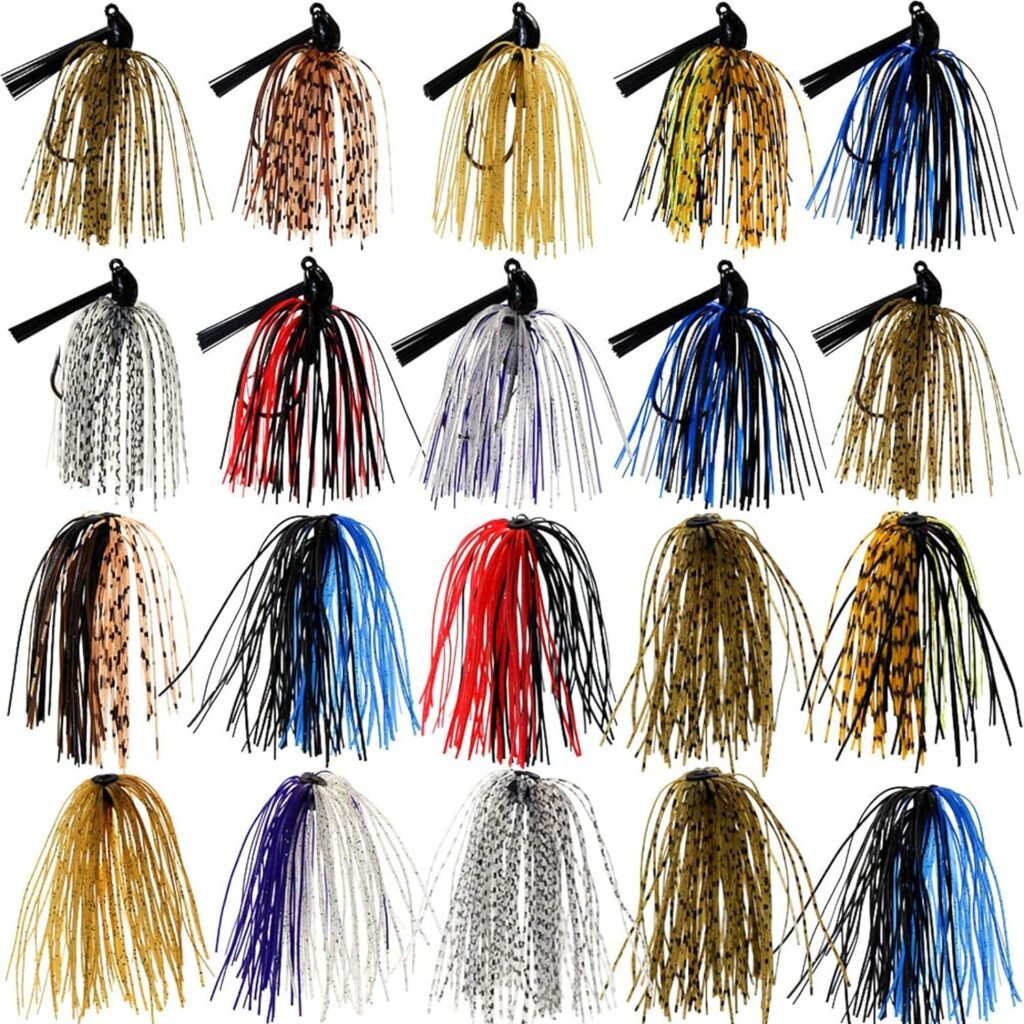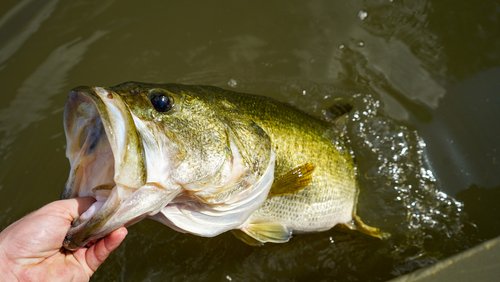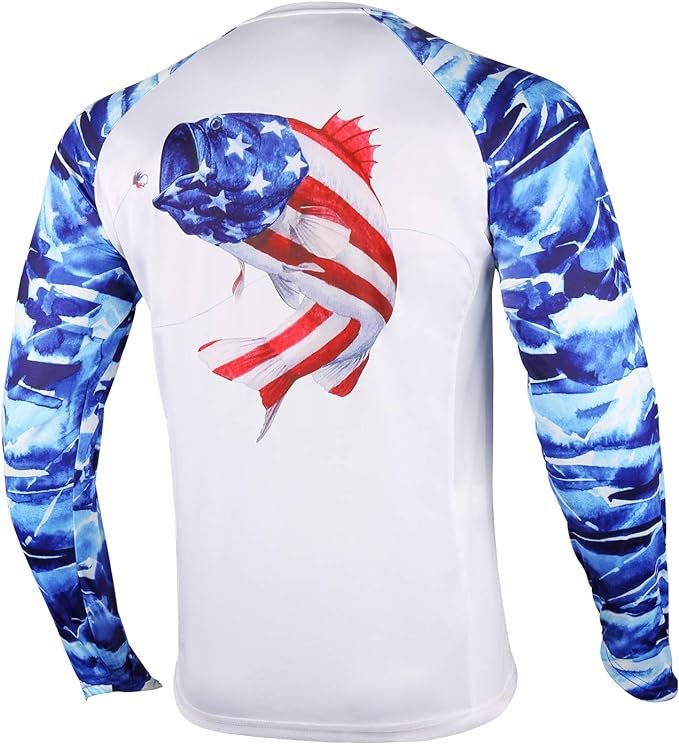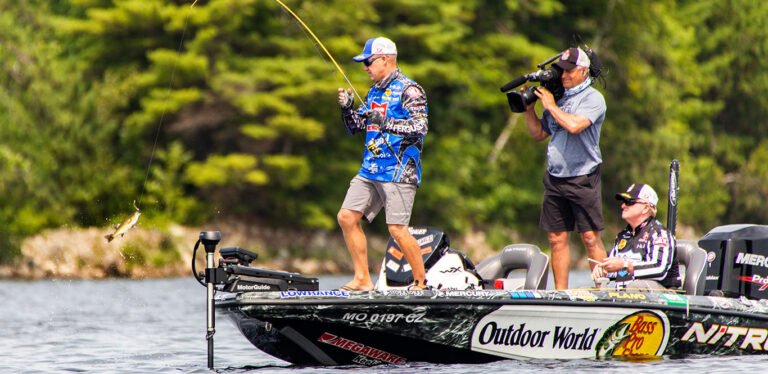Finding the best bass fishing rigs is an essential component of a successful fishing venture. These specialized setups are vital in effectively presenting baits to entice bass into striking. Let’s take a look.
Understanding the different types of rigs commonly used in bass fishing is crucial for maximizing your chances of landing that prized trophy. From finesse techniques to power presentations, each rig offers a unique approach tailored to specific conditions and preferences.
Texas Rig
The Texas rig is arguably one of the most versatile and widely-used bass fishing rigs. Its simplicity lies in its ability to penetrate heavy cover with minimal snagging, making it ideal for luring out those elusive bass hiding amidst submerged vegetation or structure. To set up a Texas rig, you’ll need a bullet-shaped weight threaded onto your main line above a hook.
The hook is then inserted into the soft plastic bait, such as a worm or lizard, allowing for weedless presentation and natural movement underwater. Anglers have the freedom to experiment with various bait sizes, colors, and actions to match the prevailing conditions and trigger feeding responses from bass.
Carolina Rig
The Carolina rig excels when targeting deeper water structures or areas with sparse cover where bass may be suspended or roaming freely. This rig offers superb sensitivity and allows anglers to cover extensive areas efficiently while maintaining bottom contact.
It consists of a sliding sinker followed by a bead and swivel attached to a leader line terminating with an offset hook carrying your preferred soft plastic bait – typically worms or creature baits work well with this setup. The Carolina rig’s design enables it to create enticing movements as it glides along the bottom, effectively imitating prey species like crayfish or baitfish that bass find irresistible.
Drop Shot Rig
The drop shot rig is a finesse technique that has gained popularity in recent years, especially in clear water scenarios or when bass are less aggressive. This rig keeps the bait suspended above the bottom, enticing finicky bass into striking.
To construct a drop shot rig, start by tying a Palomar knot to attach a hook to your line, leaving a tag end for your leader. Tie a small hook about 1-2 feet above the weight using another Palomar knot.
Commonly used soft plastic baits for drop shot rigs include worms, minnow imitations, or small creature baits. The key to this rig’s effectiveness lies in its ability to maintain precise control over the bait’s position while imparting subtle movements that entice curious bass into biting.
Jig and Pig Rig
The jig and pig rig is renowned for its ability to tempt larger bass lurking in heavy cover or deep structures. It consists of a lead-headed jig adorned with a skirt and coupled with a pork trailer (typically made from pork rind or soft plastic imitation). This combination creates an alluring profile that imitates crayfish or other forage species favored by larger predator fish like bass.
Anglers can customize the size and color of their jigs and trailers based on prevailing conditions and personal preferences. The jig and pig rig requires precise presentation techniques such as flipping or pitching into specific target areas, making it an excellent choice for anglers seeking big bites in challenging environments.
Wacky Rig
The wacky rig is an unconventional yet highly effective setup that has gained popularity among avid bass anglers. Its simplicity lies in its presentation – suspending a weightless soft plastic bait right at the center using an O-ring or simply hooking it through the middle section without additional weight. This unique configuration allows the bait to exhibit tantalizing wobbling and fluttering actions as it descends, mimicking the behavior of injured or vulnerable prey.
The wacky rig shines in situations where bass are not actively feeding or when finesse approaches are required to entice neutral or reluctant fish. Anglers often opt for stick baits or other slender soft plastics, experimenting with different colors and scents to trigger a reaction from bass.
Overall, understanding the strengths and applications of each type of bass fishing rig is crucial for any angler aiming to become a well-rounded and successful bass hunter. By learning these various techniques, you will have the versatility necessary to adapt to changing conditions on the water and increase your chances of landing that prized trophy.
Texas Rig
Detailed explanation of how to set up a Texas rig
To set up a Texas rig, it is vital to consider the right hook and weight size. For hooks, opt for wide gap hooks or offset worm hooks to ensure proper bait presentation and secure hooksets. The weight size should be chosen based on the depth of the water and the desired fall rate.
Once you have selected your hook and weight, the next step is selecting an appropriate soft plastic bait. Popular choices include plastic worms, creature baits, or lizards that mimic natural bass prey.
Now comes the crucial part – rigging the bait properly. Start by inserting the pointy end of your hook into the head of the soft plastic bait about ¼ inch deep, then thread it through until it reaches halfway down its body.
Afterward, rotate the tip of your hook back into the body so that it becomes weedless and streamlined. Ensure that your bait sits straight on the hook for optimal presentation.
When fishing with a Texas rig, there are several tips and tricks to keep in mind for maximum effectiveness. It is important to experiment with different color combinations based on water clarity and conditions to determine what entices bass most effectively.
Additionally, varying retrieval speeds can help trigger strikes from both active and passive fish. Pay attention to structure and cover where bass are likely hiding as they often ambush prey from these areas.
Carolina Rig
Comprehensive breakdown of setting up a Carolina rig
The Carolina rig requires careful consideration when selecting suitable beads, swivels, hooks, and weights. Beads serve as buffer zones between various components while adding noise attraction for bass; use glass or plastic beads in contrasting colors for optimal visibility under different water conditions. Swivels play a crucial role in preventing line twist; choose high-quality, barrel-style swivels that can handle the weight and strain of long casts.
Selecting the right hooks for a Carolina rig is essential; offset worm hooks or wide gap hooks work well for this purpose. When it comes to weights, bullet-shaped ones are generally preferred, as they minimize snagging and provide a natural gliding motion.
Tying the necessary knots for assembling the rig is another critical aspect; commonly used knots include Palomar knots for attaching swivels and improved clinch knots for securing hooks. Pairing an ideal soft plastic or live bait with the Carolina rig will depend on local bass preferences, water clarity, and available forage.
Experiment with different options such as lizards, crawfish imitations, or curly-tailed worms to determine what triggers strikes most effectively. Mastering various techniques for presenting and retrieving the Carolina rig – such as dragging it slowly along the bottom or using subtle rod twitches to mimic injured prey – will greatly increase your chances of success.
Drop Shot Rig
Detailed guide on constructing a drop shot rig
When constructing a drop shot rig, it is crucial to carefully select appropriate hooks, weights, and leader lengths. For hooks, opt for light wire octopus-style hooks in sizes 1-4 depending on bait size and target species.
The weight used should be just heavy enough to maintain contact with the bottom while allowing your bait to move naturally in response to water movements or fish actions; cylindrical or ball-shaped weights are commonly employed in drop shot rigs. Leader length can vary but typically ranges from 6-12 inches; shorter leaders offer better sensitivity while longer ones provide increased separation from the weight.
Tying specific knots required for assembling this unique rig involves using either palomar or clinch knots when attaching hooks to fluorocarbon or braided mainlines respectively; both provide strong connections without compromising sensitivity. When it comes to bait selection, various types work well with drop shot rigs, including finesse worms, small creature baits, or minnow imitations.
Experimenting with different colors and sizes is key to finding what elicits the best response from bass in your specific fishing environment. Tips for effectively working the drop shot technique include subtle rod twitches or gentle shakes to impart lifelike movements on the bait, maintaining a semi-slack line for enhanced feel and immediate detection of strikes, and targeting areas with structure or cover where bass are likely to be holding.
Jig and Pig Rig
In-depth explanation
The jig and pig rig is a versatile option for targeting big bass in various conditions. It consists of a jig head adorned with a pork trailer that mimics the movement and appearance of natural prey. Choosing the right jig head involves considering factors such as water depth, cover density, and desired presentation style.
Opt for football heads in rocky terrain or grassy areas where snagging is likely; use flipping jigs when fishing heavy cover like vegetation or wood structure; prefer swimming jigs for open water scenarios that require horizontal movement. Selecting an appropriate pork trailer is essential as it adds bulk, scent, and enticing action to attract bass.
Common choices include pork chunks or trailers made from natural materials like boar hair; however, synthetic trailers can also be effective thanks to their durability and versatility in imitating various prey species. To fish a jig and pig rig effectively, cast your lure near structure or cover likely harboring bass.
Allow the bait to sink naturally by counting down before initiating your retrieve; vary retrieve speeds such as hopping along the bottom or swimming through vegetation depending on fish activity level. Pay close attention to subtle strikes as big bass often engulf the entire lure leading to only slight indications of a bite.
Conclusion
In the realm of bass fishing, utilizing the appropriate rig can make all the difference in your angling success. The Texas rig offers a versatile and weedless presentation, allowing for effective bait delivery in various conditions.
Meanwhile, the Carolina rig’s ability to cover large areas and its enticing presentation make it a go-to choice when targeting bass. The drop shot rig provides finesse and sensitivity, making it ideal for enticing sluggish or finicky fish.
The jig and pig rig offers a combination of bulk, realism, and versatility that can trigger strikes even from hesitant or territorial bass. By mastering these rigs’ intricacies and adapting them to different scenarios, you will enhance your chances of landing more trophy-sized bass.
So get out there, experiment with different techniques, and savor every moment spent pursuing these remarkable sportfish. Tight lines!







